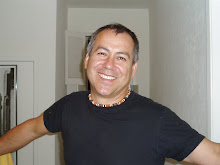Teaching Tango More Than Just Dancing
I said last time that Tango is a dance of communication and connection between two people. From an individual perspective Tango is a dance of movement. This is why one does not need a lot of fancy steps to dance a beautiful Tango. In fact, women prefer well executed simple steps to badly executed complicated patterns.
I did not do it on my own. I’ve had the pleasure and benefit of doing this with two of the best dancers in San Diego, Linda Garwood and Isabelle Kay. Both started taking Tango apart when they jointly developed the Tango Essence, a follower’s only technique class.
I credit Linda for an early desire to dissect Tango and understand good dance technique at a fundamental level in order to share her knowledge with other local dancers.
To this early effort, Isabelle’s contributed her extensive understanding dance and movement to give a solid bio-mechanical grounding to the first real women’s technique class offered locally.
Both Linda and Isabelle are insistent on the respecting the followers space and axis and require the leader to actually lead with his body from his center instead of just pretending to lead by using their arms. Though as they have found out, being a good follower does not make one a good leader. They are separate skills that use different parts of our brain.
Interestingly, their interest in good technique is due in part to the fact that both face physical problems and potential injury when dancing with dancers who had lots of steps but no technique.
I learned that not all local Tango teachers understand how to teach Tango. Some are really ballroom dancers who like to teach step and more steps. Others are bad dancers teach who pass on their bad habits to their unsuspecting students. And others, just know enough Tango to teach but really do not understand good Tango dance technique.
For a long time I did not dance with students from one particular instructor because they always pulled me forward; this instructor danced like a freight train going down hill and so the followers were constantly trying to get out of the way. This translated on the social dance floor as pulling their partners off balance.
Dancing Tango requires humility because it is very easy to pick up bad habits. You can let your ego get in the way of your dancing by refusing to acknowledge and respond to input from other dancers.
Say for example if you hurt someone’s knee or if you are constantly falling over, or if the good dancers don’t enjoy dancing with you, wouldn’t this tell you that you need work on your technique? Sadly, to many it does not and unfortunately, a number of them are teachers.
As for our teaching, Isabelle’s dance background and on-going training in modern, ballet, African, contact and other dance forms give her a deep understanding of dance movement combined with my social dance background and prior teaching experience leading a dance group allowed us to developed an approach to teaching Tango based on fundamental concepts of Argentine Tango dance technique that gets people dancing without teaching steps and that allows even beginners to improvise and create their own steps.
But don’t take our word for it. Ask others in San Diego about us.


0 Comments:
Post a Comment
I am interested in your comments. Please share them with us.
Links to this post:
Create a Link
<< Home